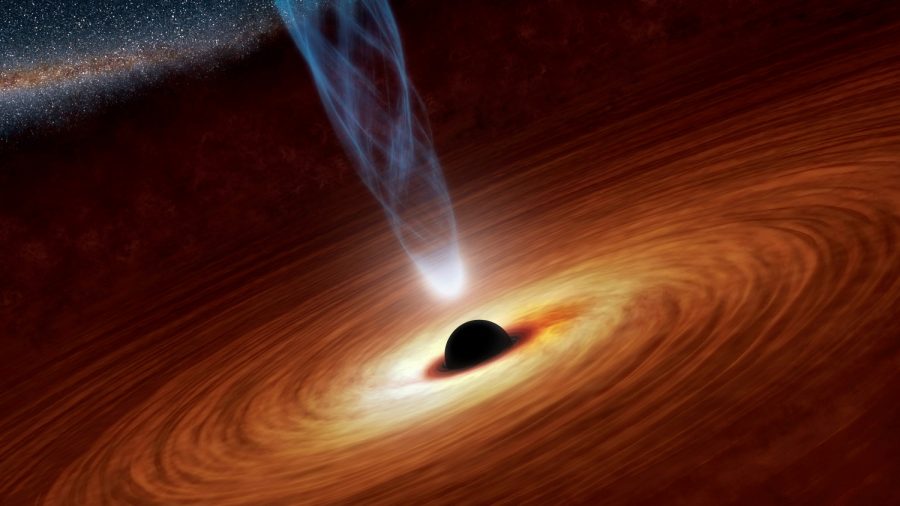A group of scientists, featuring some from the Australian National University (ANU), say that they have observed a black hole swallowing a neutron star for the first time.
Gravitational-wave observatories in Europe and the United States had been upgraded and put back to work in April to attempt to detect these great cosmic events.
They have since detected 23 cosmic movements. This one, detected on Aug. 14, is particularly intriguing.
Astronomers Think They’ve Detected A Black Hole Swallowing A Neutron Starhttps://t.co/54Y06rhM2g pic.twitter.com/20OK6BfnIj
— IFLScience (@IFLScience) August 20, 2019
The event’s name is S190814bv, and it was detected by the Advanced Laser Interferometer Gravitational-wave Observatory (LIGO), the most sensitive machine of all time.
The Virgo gravitational-wave detector in Italy also detected the event.
The scientists say that the event happened about 8,550 million trillion kilometers from Earth and seems to have been a cataclysmic event, according to the statement released by ANU.
“About 900 million years ago, this black hole ate a very dense star, known as a neutron star, like Pac-man—possibly snuffing out the star instantly,” said Professor Scott, Leader of the General Relativity Theory and Data Analysis Group at ANU and a Chief Investigator with the ARC Centre of Excellence for Gravitational Wave Discovery.
“The ANU SkyMapper Telescope responded to the detection alert and scanned the entire likely region of space where the event occurred, but we’ve not found any visual confirmation,” said Scott.
Taking 3 and 5????masses as our “cut-off” labels for #NeutronStars or #BlackHoles is a useful rule-of-thumb but it could be wrong – or at least not the full picture. So #S190814bv *could* still be 2 merging #BlackHoles… Lots more careful analysis may tell us the answer!… 3/5 pic.twitter.com/0RSc5jk0xc
— LIGO (@LIGO) August 17, 2019
Scientists are still in the process of identifying the data to establish more precise numbers on the size of the objects involved, but say that there is a “very strong likelihood” that a neutron star was engulfed by a black hole.
“Scientists have never detected a black hole smaller than five solar masses or a neutron star larger than about 2.5 times the mass of our Sun,” Scott said.
“Based on this experience, we’re very confident that we’ve just detected a black hole gobbling up a neutron star.”
“However, there is the slight but intriguing possibility that the swallowed object was a very light black hole—much lighter than any other black hole we know about in the Universe. That would be a truly awesome consolation prize.”
After the LIGO upgrade, astronomer Bryan Gaensler said, “We are poised to discover whole new types of phenomena, and we will now receive entirely new insights on familiar objects,” reported CNet.
Observing the universe using gravity is a new type of astronomy, according to Shane L. Larson: “This is a new kind of astronomy—observing the universe using gravity itself,” said the research associate professor at Northwestern University and an astronomer at the Adler Planetarium in Chicago, CNet reported. “We can’t ‘see’ black holes with telescopes. This is the first time black holes have been directly detected by measuring them, through their gravity, as opposed to measuring the effect they have on other matter in the universe.”
Robert Ward, an ANU scientist that helped with the installation of LIGO, explained how it works:
“The gravitational waves will affect masses that are free to move under the influence of gravity by changing the distance between them. This is often described at the wave ‘stretching and squeezing the space between the masses’. We measure the distance between the two masses by attaching high-quality mirrors to them, and then by bouncing laser beams off those mirrors. We then effectively time how long it takes for the laser beam to return, and since we know the speed of light, that lets us measure the distance. Of course it’s both more and less complicated than that, but that’s the basic idea.”
“We will either see a neutron star being ripped apart by a black hole, or getting swallowed whole like Pac-Man swallowing a ghost,” said Simon Stevenson, an astronomer with Swinburne University of Technology in Australia, CNet reported. “Either way, we are in for a show!”


